
Link insertions is an excellent SEO technique to build powerful backlinks.
Inserting links requires careful consideration and understanding of best practices. This article explores the basics of link insertion and provides insights on how to place links effectively.
Whether you are a website owner, content creator, or SEO professional, understanding the principles of proper link placement will help you maximize the impact of your links and optimize your online presence.
What is a Link Insertion?
A link insertion is an SEO link building technique where you identify relevant content on niche domains to place contextual links.

Link insertions are also commonly referred to as link placements.
You can do link insertions via guest posting, broken link building, resource page listing, and by conducting outreach campaigns.
Do Link Insertions Help with SEO?
Yes, link insertions play a vital role in SEO and can significantly benefit your website's search engine rankings and visibility. Here are several reasons why link insertions are important for SEO:
Enhanced Page Authority and Rankings
Well-placed link insertions contribute to the authority and ranking potential of specific pages on your website. External links from reputable and relevant websites signal to search engines the credibility and relevance of your content, potentially boosting your rankings.
Increased Organic Traffic
Link insertions can drive organic traffic to your website.
When you strategically place links in relevant content on authoritative websites, it can attract users who click on those links and visit your site. Higher links leads to greater website reputation and higher organic rankings. Top organic rankings lead to more organic traffic.
Anchor Text Optimization
The anchor text used for link insertions is an opportunity to optimize for relevant keywords.
By using descriptive and keyword-rich anchor text, you provide search engines with additional context about the linked page's content. This can positively influence search engine rankings and visibility for specific search queries.

Natural Link Profile
Link insertions contribute to building a natural and diverse link profile for your website.
A healthy link profile includes a mix of link types from various authoritative sources. A natural link profile signals to search engines that your website is trusted, relevant, and deserving of higher rankings.
What is an Example of a Link Insertion?
A link insertion looks like this:
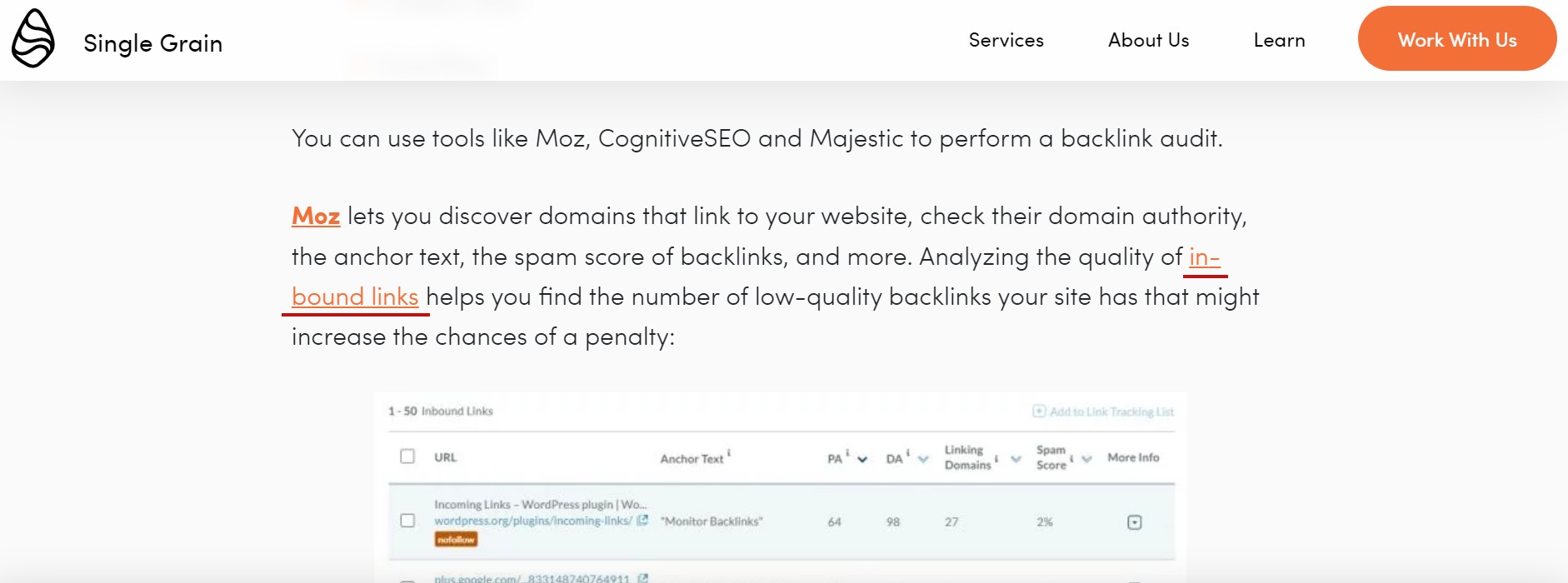
In the above image, the link underlined in red has been added in the content to increase the authority of the linked domain.
You can also add links to your website from relevant domains like above.
Let's say you run a fitness and nutrition blog, and you come across a reputable website with an article about how to make peanut butter.
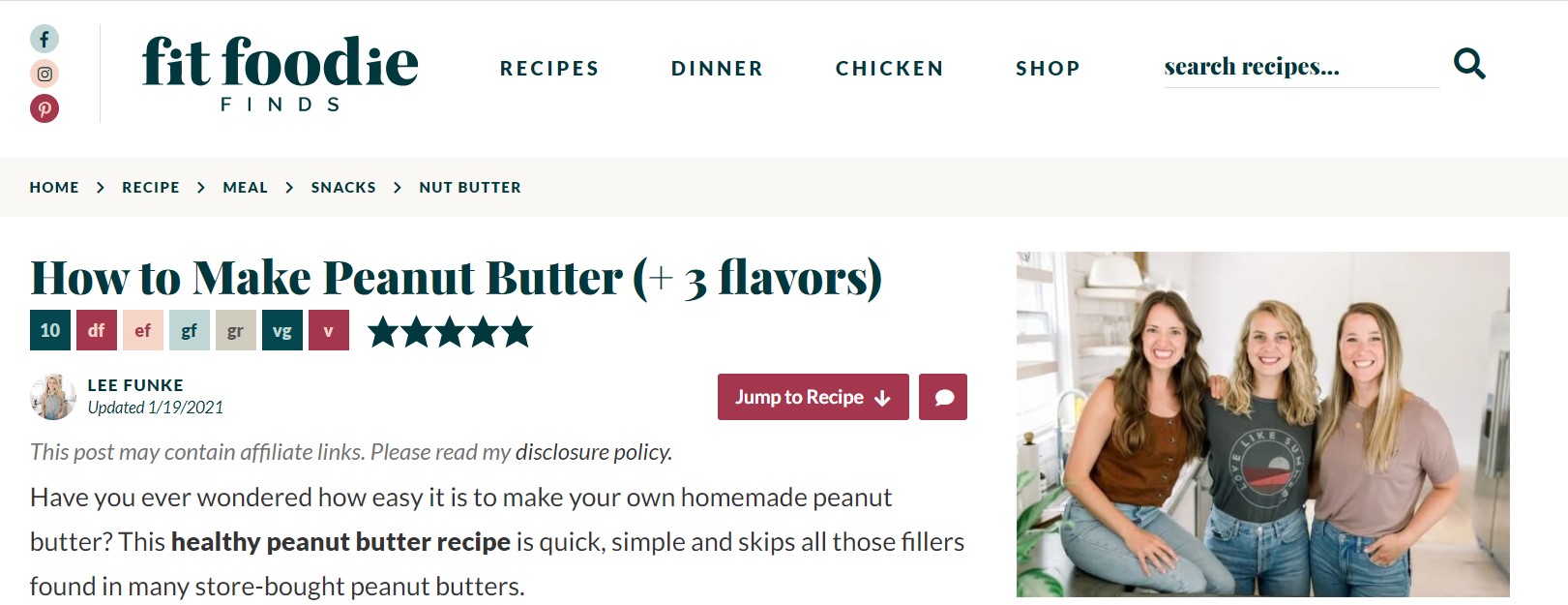
The article shares 3 different recipes for creating flavoured peanut butter at home and also answers frequently asked questions such as "How Long Does Homemade Peanut Butter Last?" and "How to Store Homemade Peanut Butter".
You notice that the article mentions how you can use peanut butter to make various smoothies for a post-workout boost.
As you have a blog post on your website about "Post-Workout Peanut Butter Blast", you see an opportunity to provide additional value to their readers.
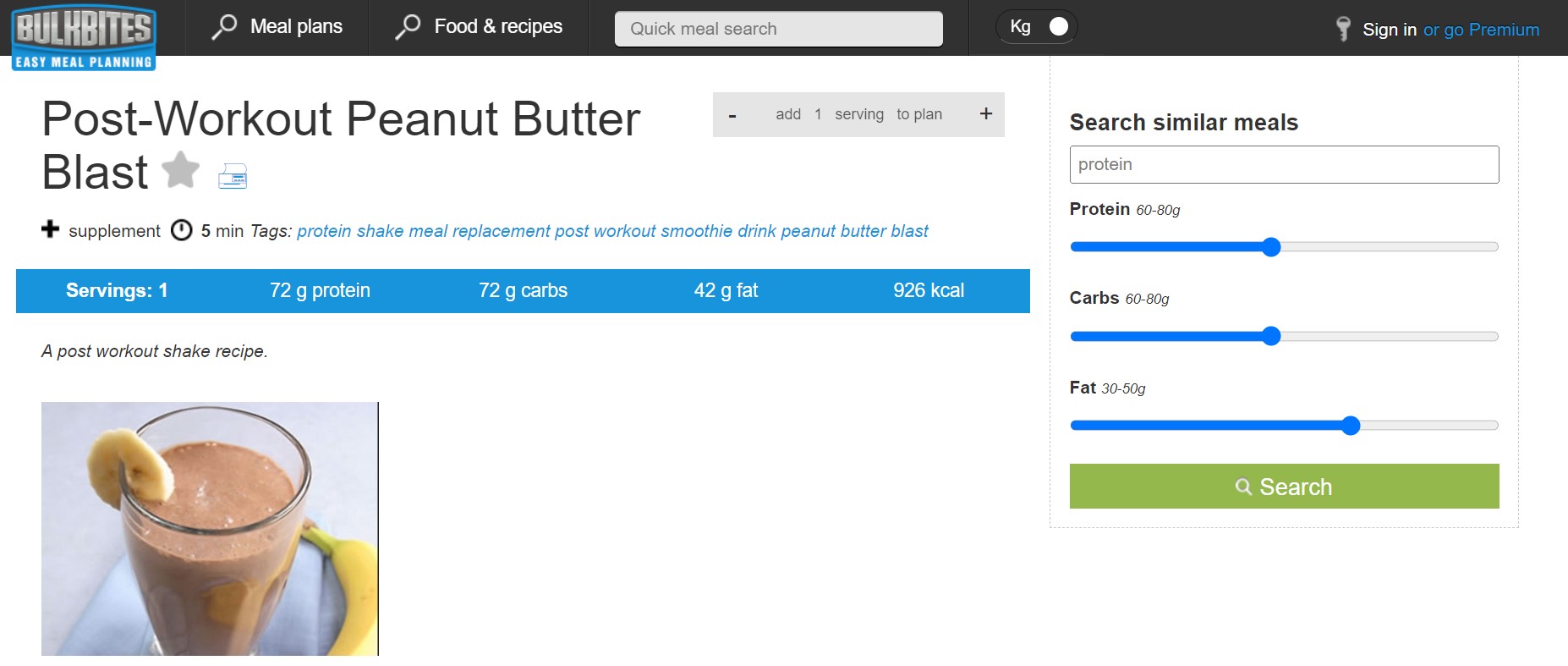
You reach out to the website owner, expressing your appreciation for their insightful article and explain how your blog post complements their content by providing a recipe for making a post-workout peanut butter smoothie.
You request to have your relevant link inserted into their article by sending the webmaster an email. If the request gets approved, you acquire a backlink.
Link insertions should be done at scale because the chances of getting link insertion requests approved are low.
What to Look for in a Website for Link Insertions?
When considering a website for link insertions, here are some key aspects to look for:
Relevance
The website should be relevant to your industry, niche, or the topic of your content. The more closely aligned the website's content is to yours, the better the link insertion will contribute to the overall relevance and context of your content.
Authority and Trustworthiness
Analyze the website's authority and trustworthiness. Check metrics such as domain authority, page authority, and trust flow.
Look for signs of a reputable and established website, as links from high-quality and authoritative sources are more valuable for SEO.
Traffic and Engagement
Consider the website's traffic and engagement metrics, such as monthly visitors, average time on site, and bounce rate. A website with significant traffic and engaged users can potentially drive more referral traffic to your website through link insertions.

Link Profile
Evaluate the website's existing link profile. Look for signs of quality backlinks, diversity in linking domains, and a natural link profile.
Avoid websites with a spammy or unnatural link profile, as it may indicate low-quality or potentially harmful link practices.
Audience and Demographics
Understand the website's target audience and demographics. Ensure that the website's visitors align with your target audience, increasing the chances of attracting relevant traffic and potential conversions through link insertions.
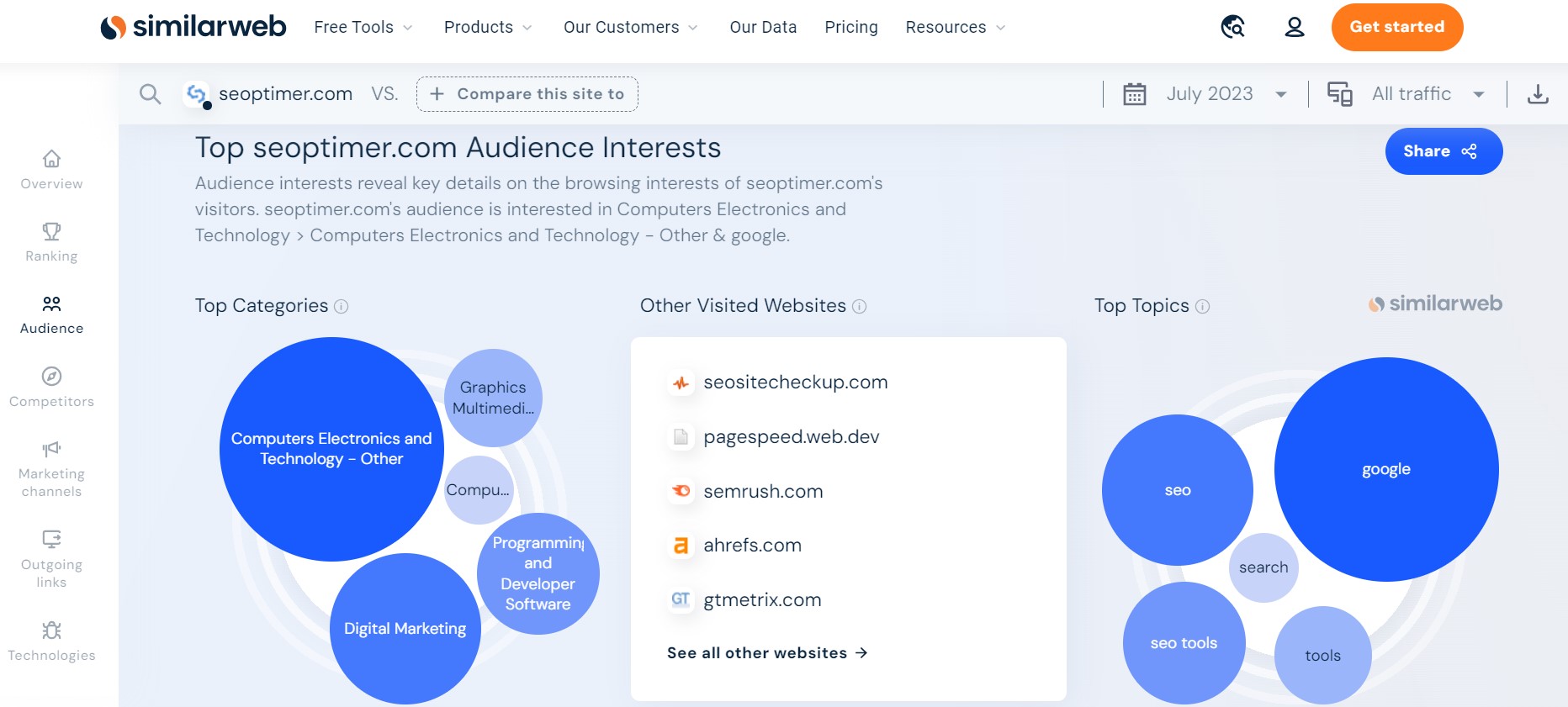
Editorial Standards
Assess the website's editorial standards and content quality. Look for well-written, informative, and credible content.
Websites that maintain high editorial standards are more likely to offer valuable opportunities for link insertions.
Linking Policies and Guidelines
Review the website's linking policies and guidelines. Ensure that they align with your ethical practices and adhere to search engine guidelines.
Avoid websites that engage in manipulative link building practices or explicitly prohibit certain types of link insertions.
By carefully evaluating these factors, you can identify websites that offer valuable link insertion opportunities that align with your SEO goals, improve your website's authority, and attract targeted traffic to your content.
How do I Find Link Insertion Opportunities
Finding link insertion opportunities requires some research and outreach. Here are some of the best methods to help you identify potential link insertion opportunities:
Competitor Analysis
Analyze the backlink profiles of your competitors to identify websites that have linked to them.
Look for opportunities where you can reach out to those websites and request a link insertion for relevant content on your website.
You can use top backlink checker tools like SEOptimer to find the top domains that link to your competitors.
Simply enter your competitor’s domain in the backlink checker and the tool will automatically return a list of all the sites linking to it.
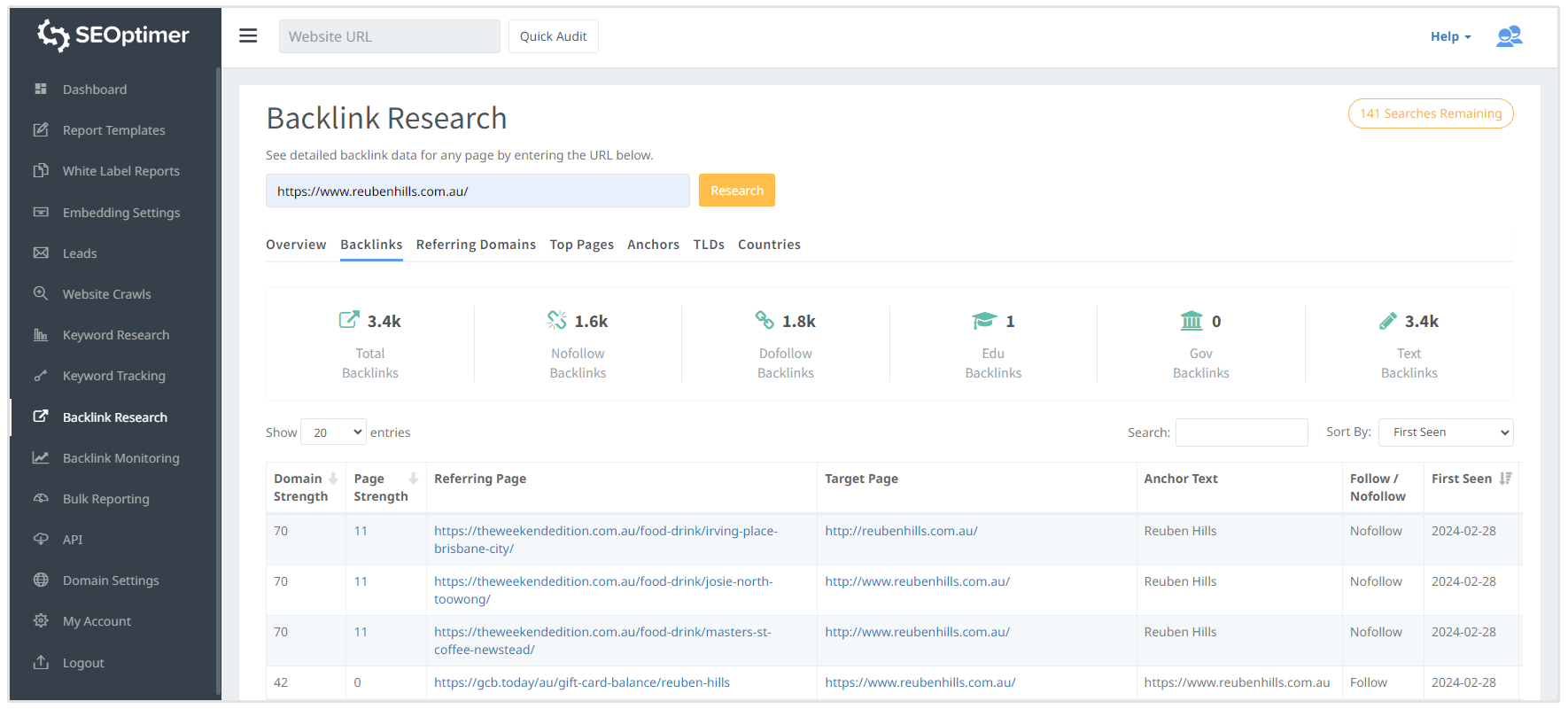
Guest Blogging
Look for guest blogging opportunities on reputable websites in your industry. Most guest posting sites also allow link insertions.
You should explicitly ask for it in your email and the web admins will share their guidelines for the kinds of link insertions they allow on their website.
Resource Pages and Directories
Explore industry-specific resource pages, directories, or resource lists that accept link submissions. Find relevant categories or sections where you can submit your website and request a link insertion.
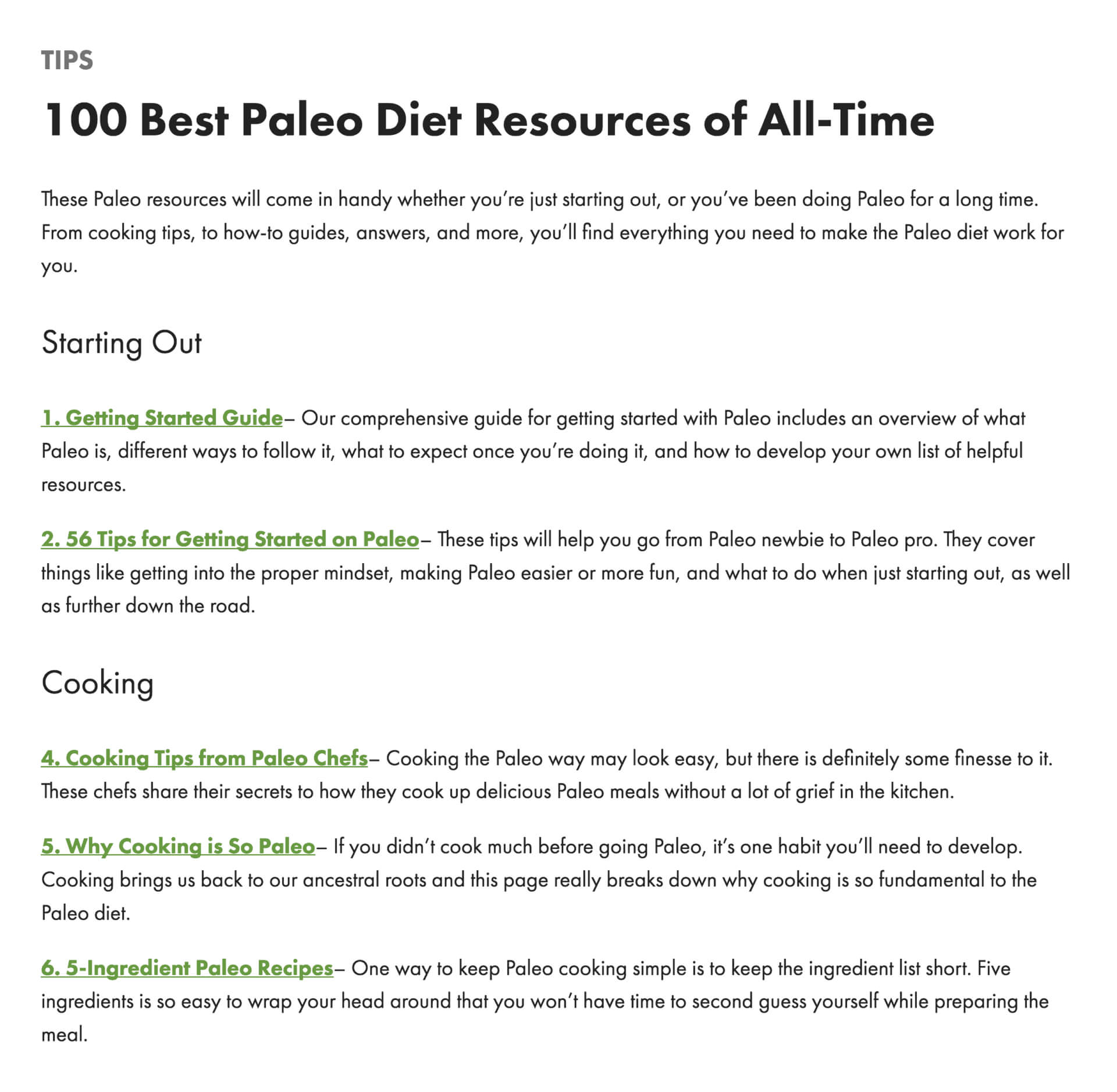
Broken Link Building
Identify websites with broken links in your industry. Reach out to the website owners, alerting them about the broken links, and suggest relevant content from your website that can be inserted as a replacement.
Content Outreach
Proactively reach out to website owners, bloggers, or content creators in your industry. Propose collaboration opportunities where you can provide valuable content that includes link insertions to relevant resources on your website.
HARO (Help a Reporter Out)
Monitor HARO or similar platforms where journalists and writers seek expert opinions and contributions.

Social Media Monitoring
Keep an eye on social media platforms and industry-specific forums or communities. Look for discussions or posts where you can contribute valuable insights and include link insertions to relevant resources on your website.
How To Use the Right Anchor Text for Link Insertions?
Using the right anchor text for link insertions is crucial for optimizing the impact and relevance of the inserted links. Here are some tips to help you choose the right anchor text:
Consider Relevance
Ensure that the anchor text accurately reflects the content of the linked page. Choose words or phrases that directly relate to the topic or keywords covered in the destination page. This helps search engines understand the context and relevance of the link.
Use Variations of Your Primary Keyword
Incorporate relevant keywords in the anchor text, but avoid excessive keyword stuffing.
Use variations of the target keywords or related terms to maintain a natural and balanced approach. This can improve the link's visibility in search engine rankings for specific search queries.
For example, if your primary keyword is "yoga studio”, you can use the below anchor text variations to link to your website homepage:
- Yoga center
- Yoga gym
- Modern yoga studio
- Yoga school
- Yoga facility
- Yoga ashram
- Yoga institute
- Yoga club
Remain Descriptive and Clear
Aim for anchor text that provides a clear and concise description of what users can expect when they click on the link. It should give users a good understanding of the linked content without being misleading or vague.
Avoid Generic Phrases
Stay away from generic phrases like "click here" or "read more" as anchor text.
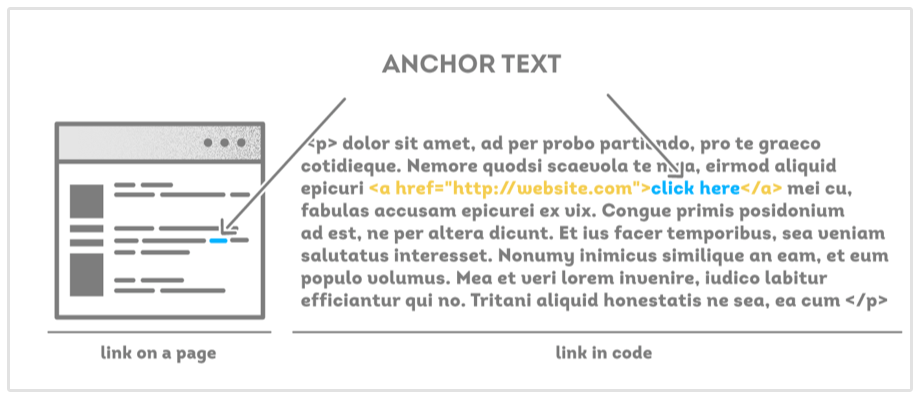
These provide little context and don't convey the content or purpose of the linked page. Instead, opt for more specific and descriptive anchor text that accurately represents the linked content.
Consider User Experience
Think about how the anchor text will appear to users within the context of your content. Make sure it fits naturally within the sentence or paragraph and flows smoothly. Avoid interrupting the flow of your content with overly long or awkwardly placed anchor text.
Let's say you want to acquire a backlink to your scientific study about green tea from a blog post about the health benefits of green tea. The anchor text should seamlessly fit within the context of your content to maintain a smooth flow for readers.
You can link to the page from the content like: "XYZ research on green tea’s antioxidant’s properties has shown that green tea is rich in antioxidants."
In this example, the anchor text "XYZ research on green tea’s antioxidant’s properties" is seamlessly integrated into the sentence without interrupting the flow of the content.
It provides additional context for readers, indicating that there is a credible scientific study supporting the health benefits of green tea.
Conclusion
Strategically placing links within content is a fundamental aspect of effective SEO and content marketing.
By understanding the basics of link insertion and following best practices, you can enhance the user experience, improve search engine rankings, and drive targeted traffic to your website.
Remember to consider the relevance, context, and placement of your links to ensure they provide value to your audience and align with search engine guidelines. With a thoughtful approach to link insertion, you can optimize your online presence and reap the benefits of increased visibility, engagement, and conversions.










